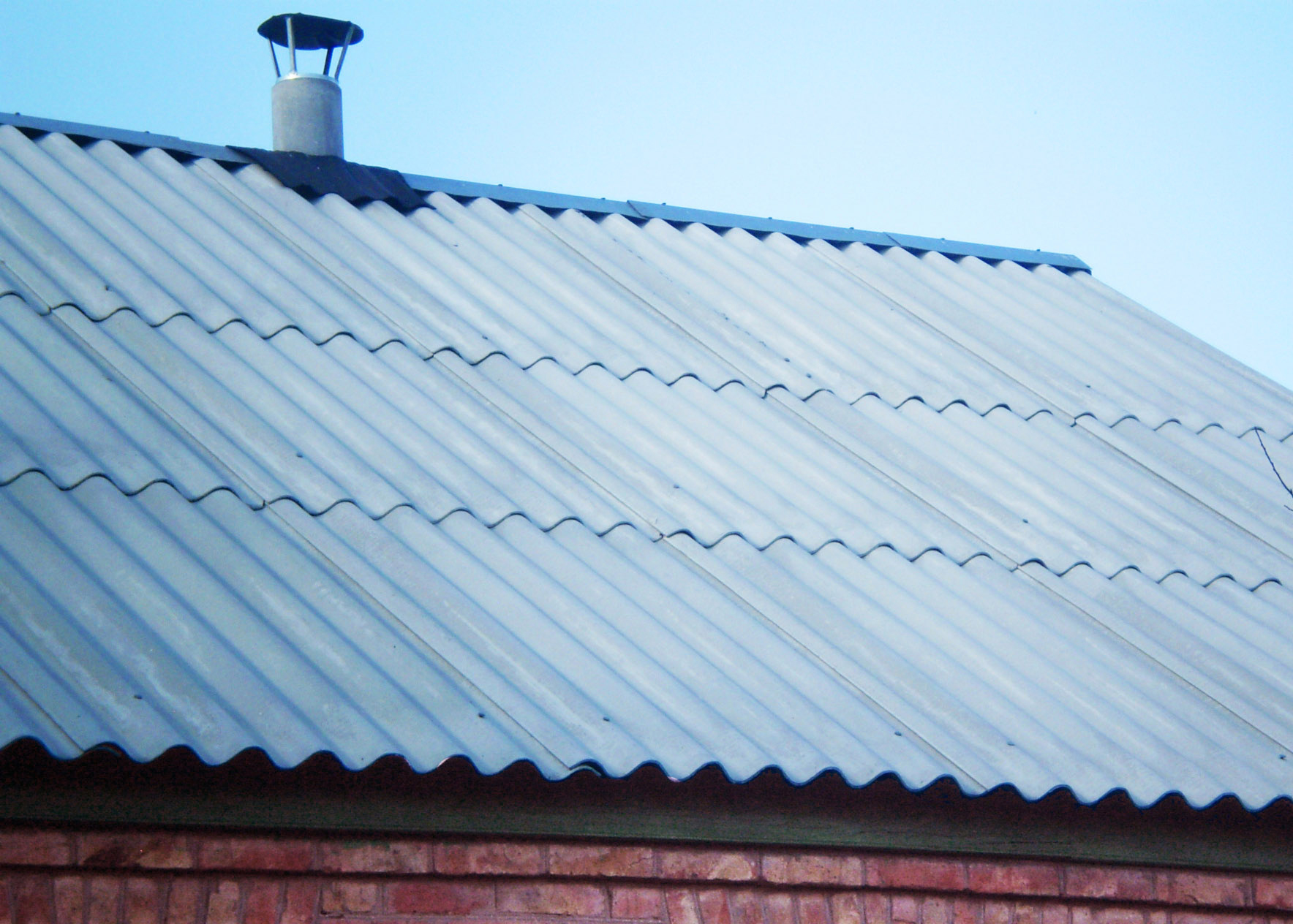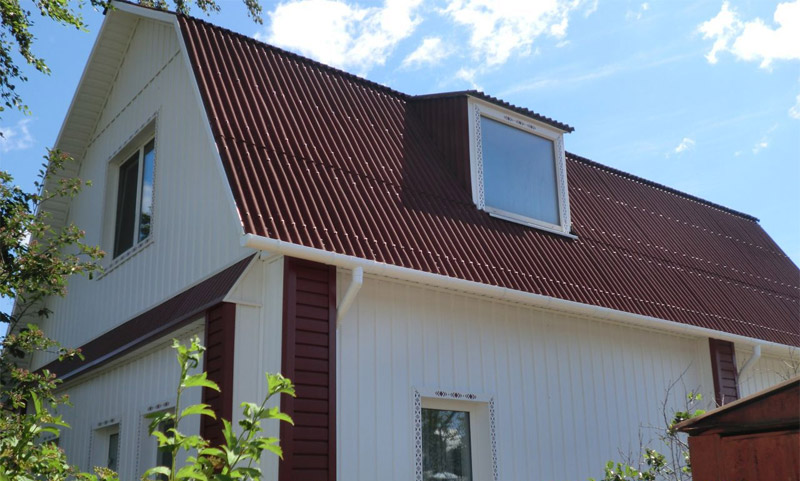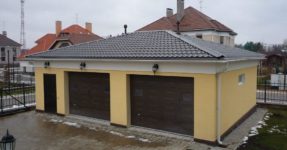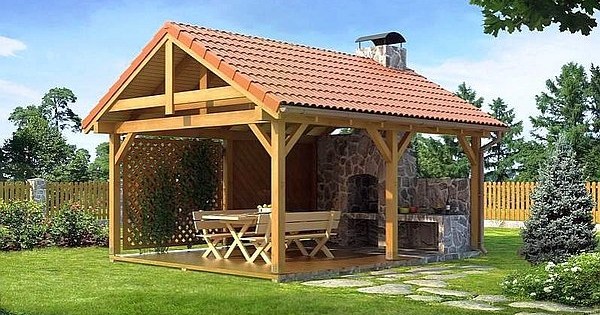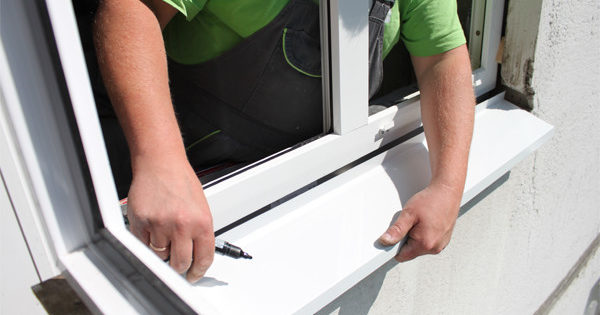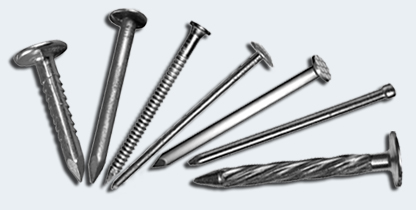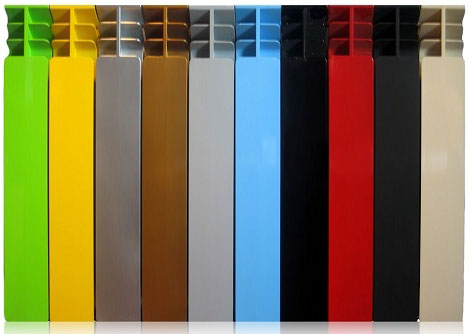Slate Paint: 5 Tips For Choosing
Slate is a very common material in construction. And we are talking not only about the roof, but also various kinds fences, and some craftsmen can even build from it something for household needs. Familiar to many wave slate It is made of asbestos cement, and therefore has an unremarkable gray color. Agree, in many cases, such an element can look extremely unprofitable, and therefore the slate is often painted. This process is not so complicated, but in order to achieve a high-quality result, you will need good paint for slate. We will talk about how to choose one today.
No. 1. Why paint the slate?
Before proceeding to the choice of paint, it is necessary to answer the question "Do I need to paint the slate and, in fact, why?". As we have already noted, this product has an inexpressive gray color, which rarely satisfies anyone, especially when it is assumed that it will be in full view. However, in the process of painting the slate, not only aesthetic intentions, but also practical ones are hidden. Despite the fact that in many respects the slate roofing surpasses the options from corrugated board and metal, time and weather can spoil even her.

The fact is that over time, atmospheric effects like moisture and temperature changes lead to the formation of asbestos chips on the slate, which is one of the main causes of moss and microcracks. And this reduces not only its attractiveness, but also reliability in general. Therefore, it is recommended to paint the slate, since in addition to additional protection from the listed troubles, the paint gives it greater strength and attractiveness. Also, many modern slate paints have high antiseptic properties, which will also protect this material from the appearance of fungus and mold.
No. 2. Advantages and disadvantages of slate
The fact that the painting of slate as a whole has a positive effect on its properties, we already understood. However, since we said that this roofing material has several advantages over some analogues, it would not be out of place to list them. And among the main ones, it is worth highlighting the following:
- high strength due to the successful combination of asbestos with cement;
- does not rust, does not conduct electricity;
- well resists moisture and does not so much bask in the sun (like metal);
- can last much longer;
- much more affordable cost compared to peers.

Of course, he also has a number of other positive features, such as good sound insulation or the absence of toxic emissions during combustion, but this is not so important for many consumers features. Frankly, slate has its own limitationsthat are worth mentioning for the sake of objectivity. Fortunately, there are not many of them, and they are expressed in a rather heavy weight (one sheet of slate weighs about 18 kg), and also in spite of the high strength, the slate can be extremely fragile. Damage it during inaccurate transportation or installation of labor is not difficult.
No. 3. Types of ink for slate
Well, we figured out the material. Now is the time to move on to how to choose paint for slate, what to look for and what to consider before buying? By and large, nothing complicated in this process expects you, since the main things that you have to dwell on are kind of paint depending on the main active substance, as well as the manufacturer. It is these two components that are decisive, and therefore we will dwell on them in more detail.
So, first of all, as we already managed to find out, paints for slate differ in the main active ingredient and are divided into four types:
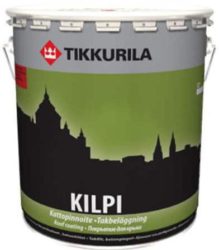 Acrylic. Also known as water-dispersible paints, are widespread and are often used for painting slate. Mostly also because they give it positive properties, such as increasing the surface sliding characteristics. The latter, for example, is extremely practical in the situation with precipitation as a whole, since it flows much easier from the roof, without lingering there and without having a negative impact. Such protection against moisture at the same time protects the slate from destruction, significantly extending its service life. The color palette of acrylic paints is diverse, and you will surely find the option that suits you and your home. And they dry out pretty quickly.
Acrylic. Also known as water-dispersible paints, are widespread and are often used for painting slate. Mostly also because they give it positive properties, such as increasing the surface sliding characteristics. The latter, for example, is extremely practical in the situation with precipitation as a whole, since it flows much easier from the roof, without lingering there and without having a negative impact. Such protection against moisture at the same time protects the slate from destruction, significantly extending its service life. The color palette of acrylic paints is diverse, and you will surely find the option that suits you and your home. And they dry out pretty quickly.
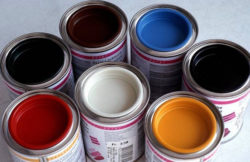 Enamel. One of the best options for increasing the strength characteristics of slate, to give it reliable protection against atmospheric influences, is this type of paint. One of the advantages of enamel paints is the formation of a coating that looks similar to enamel, which is extra durable. If you do not want to repaint the slate to give the color freshness in the near future (which may vary depending on various factors), then enamel paint will be an excellent option, since it contains pigments that protect it from fading.
Enamel. One of the best options for increasing the strength characteristics of slate, to give it reliable protection against atmospheric influences, is this type of paint. One of the advantages of enamel paints is the formation of a coating that looks similar to enamel, which is extra durable. If you do not want to repaint the slate to give the color freshness in the near future (which may vary depending on various factors), then enamel paint will be an excellent option, since it contains pigments that protect it from fading.
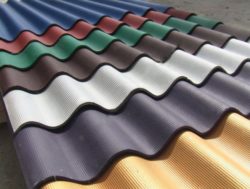 Liquid plastic. In most cases, they are synthetic paints based on various polymers or bitumen, although some also claim that liquid plastic refers to acrylic building paints. One way or another, these are modern paints, the advantages of which are good adhesion to the slate surface, durability and reliability. Another of their advantages can be considered quite affordable cost, but they also have disadvantages. Since this is a synthetics, the composition of such paints is often full of substances harmful to health, and moisture protection, in comparison with acrylic paints, may not be so reliable.
Liquid plastic. In most cases, they are synthetic paints based on various polymers or bitumen, although some also claim that liquid plastic refers to acrylic building paints. One way or another, these are modern paints, the advantages of which are good adhesion to the slate surface, durability and reliability. Another of their advantages can be considered quite affordable cost, but they also have disadvantages. Since this is a synthetics, the composition of such paints is often full of substances harmful to health, and moisture protection, in comparison with acrylic paints, may not be so reliable.
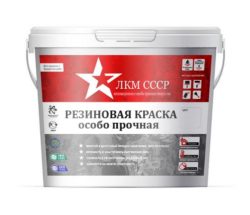 Rubber. The latter type of paint, which is considered the most popular for use when painting slate, as it has a large number of advantages, eliminating the disadvantages of the previous types. Here you have high elasticity, allowing the paint to stretch without damage, which is especially practical when microcracks appear on the slate. However, a lot of time will pass before their occurrence, since rubber-based paints protect it from all kinds of irritants. Separately, it is worth noting that it does not contain substances harmful to human health, and also has high fire safety, not succumbing to burning.
Rubber. The latter type of paint, which is considered the most popular for use when painting slate, as it has a large number of advantages, eliminating the disadvantages of the previous types. Here you have high elasticity, allowing the paint to stretch without damage, which is especially practical when microcracks appear on the slate. However, a lot of time will pass before their occurrence, since rubber-based paints protect it from all kinds of irritants. Separately, it is worth noting that it does not contain substances harmful to human health, and also has high fire safety, not succumbing to burning.
Of course, to improve the operational characteristics of slate, many recommend using rubber paints, applying them in at least two layers. However, the final choice will still depend on your needs and budget. So, given all the information received above, you can probably choose the most suitable option for you without much difficulty.
Number 4. Slate paints manufacturer
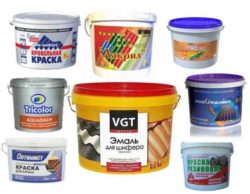 However, one should not forget that the quality of the paint itself (as in the case with many others) often depends on the manufacturer. The more popular and reliable the latter, the less likely you are to come across bad products. Although there is a downside here, as their offers often have a higher cost than their lower-quality counterparts. And here you have to choose, since, on the one hand, the slate is painted in order to save money and not change the coating to another, more expensive one. On the other hand, you may not get the desired effect from a cheap product. That is why it is not superfluous to get acquainted with the market leaders in this category.
However, one should not forget that the quality of the paint itself (as in the case with many others) often depends on the manufacturer. The more popular and reliable the latter, the less likely you are to come across bad products. Although there is a downside here, as their offers often have a higher cost than their lower-quality counterparts. And here you have to choose, since, on the one hand, the slate is painted in order to save money and not change the coating to another, more expensive one. On the other hand, you may not get the desired effect from a cheap product. That is why it is not superfluous to get acquainted with the market leaders in this category.
In the domestic market, as always, in general, you will find a sufficient number of options, both from manufacturers of the CIS countries and foreign brands. Among the first, paint from Unified, Polyfan and Butanite. All of them are distinguished by good resistance to weathering, UV radiation and for a long time retain their original color. Among foreign manufacturers, as always, Germany distinguished itself with its brand Dachbesischichtungoffering excellent paint to create durable coatings. Also do not go past the Polish Polifarb and finnish Kilpy. They are good acrylic paints with a very short drying time.
No. 5. How to paint slate?
Of course, for a high-quality painting of slate, you will need an understanding and appropriate observance of the main points of this process. And so that the paint is not wasted to no avail, we will consider some of them in more detail, including the subtleties of the preparatory phase. And first of all, let's talk about the new slate. Of course, before painting it, it is necessary to get rid of possible dust and dirt, this is logical. But where better to paint it? Naturally below. This is what distinguishes the installation of a new slate, so that you can safely and at the same time qualitatively paint it below, and only then install it. Yes, depending on the complexity of the work, the paint layer may be broken. In this case, you will have to repaint it after installation.

With the old slate, things can be a little more complicated, because first you also have to clean it. Only in this case, this process can be much more difficult. Especially if before there was no paint on it at all. Removing fungal deposits and layers of moss in most cases is a very time-consuming task. But without doing this, you can not paint the roof.
The most common methods for cleaning slate are using a brush with a metallic pile on a dry or damp surface. The availability of this process will be slightly accelerated. drill with a metal brush. However, one way or another, you run the risk of getting tired tired. The easiest method in terms of physical effort is the use of a compact high pressure washer. It will be both fast and equally effective. True, you have to take or buy it somewhere.
After you just have to disinfect the surface with an antiseptic, apply primer, and upon drying, proceed to the process of painting the slate. Again, many are advised to apply the paint in two layers, at the first spending it more economically.

